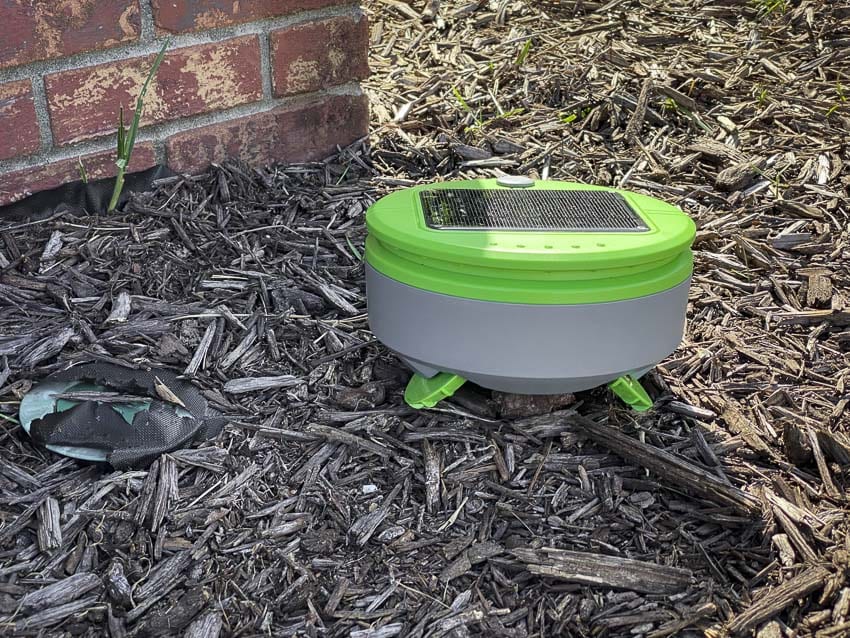We thought we had seen the practical limits of lawn robotics when we reviewed the Husqvarna 315 Automower. Then the Tertill solar-powered robotic garden weeder arrived. The Tertill weeder automagically senses the terrain, learns its surroundings, and weeds your garden so you don’t have to. How? Magic. No, actually, it’s a lot of science. However, as Arthur C. Clarke says: “Any sufficiently advanced technology is indistinguishable from magic.”
Author’s Note: We tried a total of three models of Tertill, and all three eventually stopped working within months of use. We cannot recommend this device at this time.
Tertill Weeder Overview
In a nutshell, the Tertill weeder weeds your garden by understanding that anything smaller than 2-inches tall is evil and must be destroyed. Anything over 2-inches tall is a “friendly” and should be spared. How it does this remains a mystery as I see no openings, no bumper, no exposed sensors of any kind. As we said above—magic.
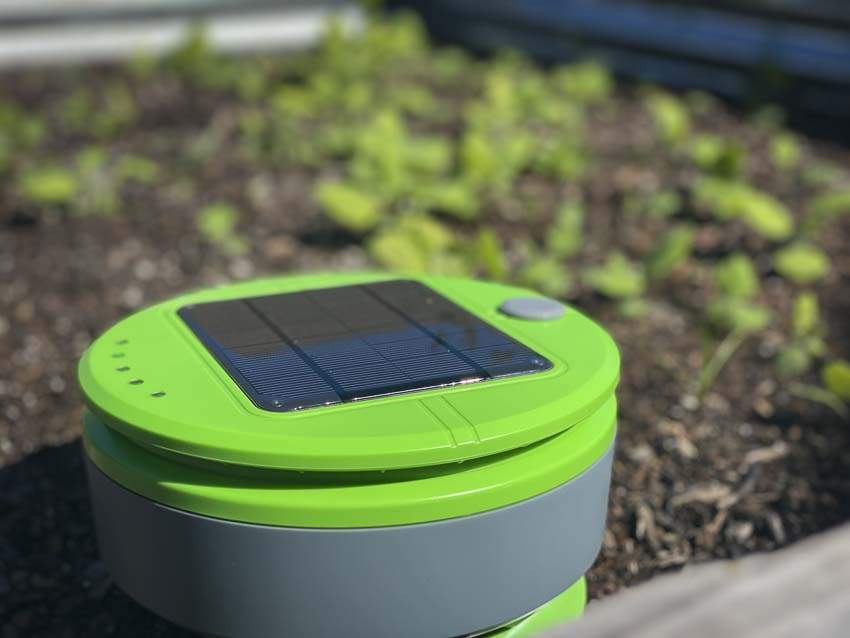
Regardless of the “how”, the Tertill remains a solar-powered garden weeder that requires no external power, no docking to recharge, and no boundary wires. It operates old-school. If you want it not to escape an area, you place the included wire guards in any open locations that it might use to venture out onto a driveway, grassy area, or anywhere else you might not want it to go.
Setting Up the Tertill Solar-Powered Weeder
Unlike many lithium-ion-powered devices, the Tertill weeder comes ready-to-go out of the box. Once you set up your boundaries, you can set it down, press the top-mounted button, and—after a brief (but-entertaining) musical interlude—off it goes.
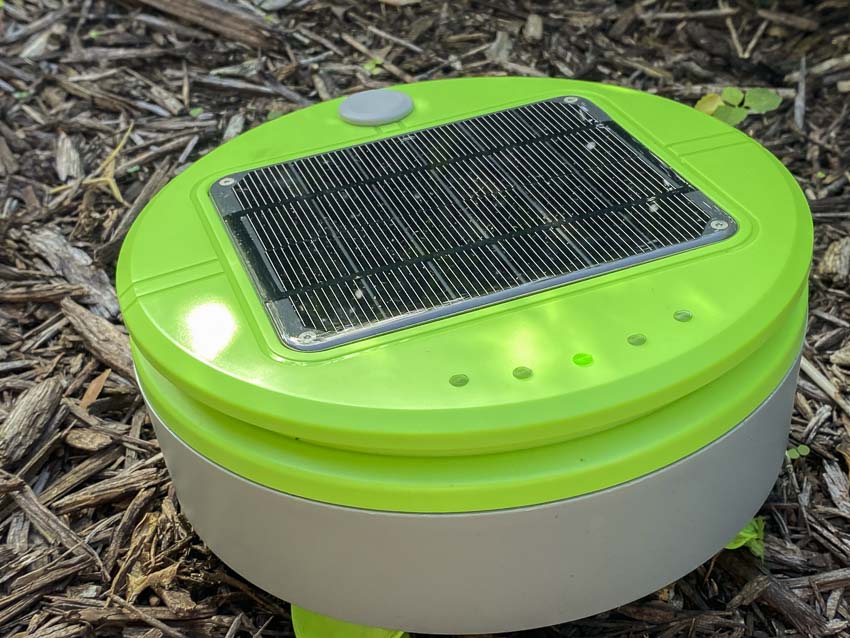
Solar power as a charging device presents an interesting opportunity. Namely, the Tertill weeder never needs to dock. Therefore, it also never needs to worry about finding its way back to a docking station. That actually saves a lot of hassle (and programming). Instead, when the Terrill “gets tired”, it just stops. Then, once the top-mounted solar panel has sufficiently recharged the onboard battery, it picks up again the next day. The folks at Tertill Corporation tell us you can expect the unit to run about 2 hours per day on average.
How It Weeds
The Tertill solar-powered garden weeder works best on gardens that have been well-kept. Don’t expect it to “mow” your weeds all down for you. It seems to thrive on contrast.
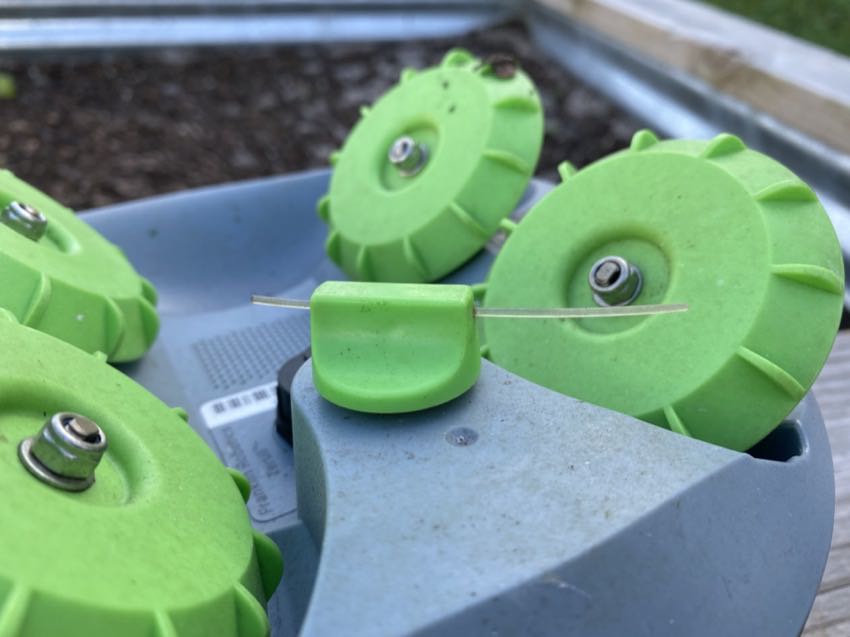
Tertill uses a short “weed whacker” string which it spins at high rpms to attack weeds. However, what surprised us was the contention that its wheels also contribute to weed-killing. Supposedly, the wheels scrub the soil non-stop which ultimately keeps weeds from growing right at the germination stage. That also explains why Tertill wants you to place it in a well-tended garden as opposed to one with established weeds.
Maximum Area
A single Tertill weeder can maintain a good-sized garden—up to 200 square feet, in fact. More than this and weeds will likely grow too fast for it to keep up.
The Tertill also lacks any smart boundary detection, so you need to install a physical barrier to surround wherever no natural one exists. A barrier might be a fence, landscaping timbers, brick walls, or the included wire barriers Tertill provides. You can also guard short or still-growing plants with the included plant guards. Placed properly, they will cause the Tertill to “bounce off” these barriers and avoid cutting down a plant you’re trying to cultivate. Once a plant is taller than 4-inches, the Tertill will avoid it automatically.
Terrain and Spacing
Another thing to keep in mind is how the Tertill moves around. Plants need at least 12 inches between them for the Tertill to maneuver properly. If you plant things in rows you can work around this exception. Just keep at least 12 inches between the rows.
We tested the Tertill solar-powered garden weeder on topsoil as well as mulch. You want the ground to be relatively flat and free of ruts and mid-sized rocks. You can use a rake to smooth out the area if needed. While we found the Tertill can handle small grades as high as 10% (6 degrees), it can get bogged down if it churns up loose soil in a single area. This happens when the soil isn’t smooth enough for the Tertill to maneuver easily and it begins to spin too much and makes its own “nest of doom”. Once we flattened out our garden this didn’t happen any longer.
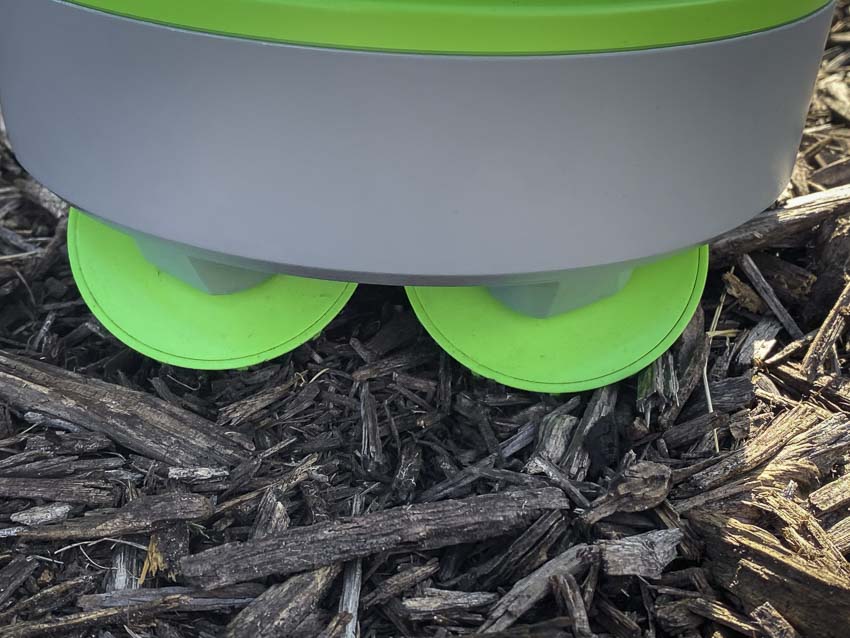
Yes, Yes, But Does It Work?
We tried a couple of different things with the Tertill solar-powered garden weeder. First, we set it up in an alcove in our front yard. That area features heavy mulch and lots of weeks. We, of course, weeded it down pretty well beforehand. After all, the Tertill isn’t a lawnmower—it’s meant to keep down the occasional weeds and maintain an otherwise healthy garden.
It actually handled the mulch quite well. It navigated the terrain, avoiding taller weeds, but decimating the shorter ones. The mulch obviously presented a tougher job for even the best weedeater and we’d expect it to wear out more quickly as it strikes both mulch and weeds.
In our raised garden beds, the Tertill really did well. We took an area that was a bit weed-filled and torture-tested the Tertill to see what it would do. After letting it go for a couple of days—lo and behold—the raised garden bed was in pretty good shape.
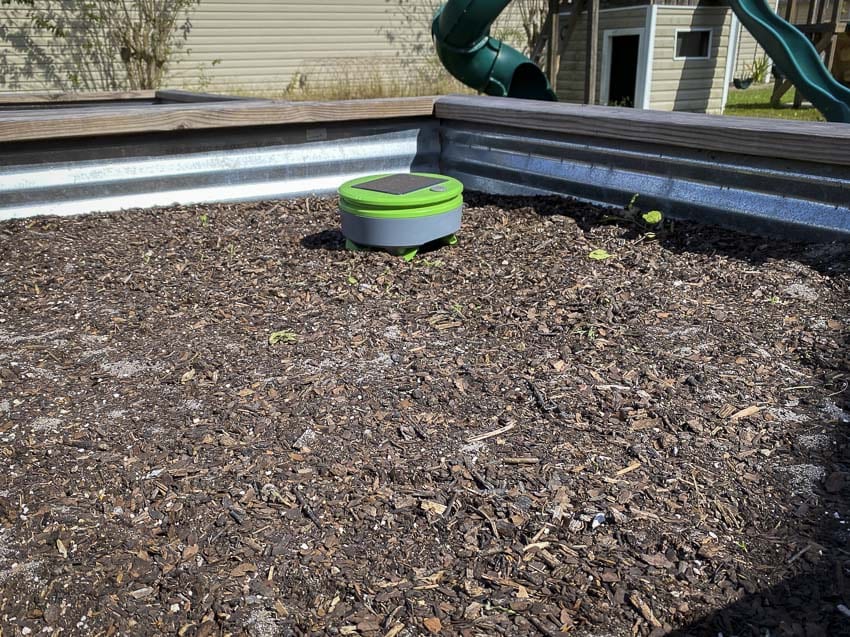
Conclusion & Pricing
Editor’s Note: After our third review sample stopped working, we have to adjust our recommendation. These products did not hold up well to Florida humidity, rain, and sun. Perhaps in your area they might do better—or you may have better luck not keeping them out 24/7 as we did. In the end, we discarded our samples and went back to manual weeding.
The Tertill not only has a great name—it actually works pretty well. Tertill gives you a pack of replacement “whacker string” even with the basic kit. That means you’re likely good for at least a season if not a year—and we live in Florida. If you need more, they sell a Whacker string replacement kit for just $14.99.
You can pick up the Tertill in several different kits:
- Weeding Robot (basic kit): $349
- Gift Bundle (additional wire guards and whacker hubs): $389
- Garden in a Box (adds garden layout plan, grow bags, and 10 seed packets): $449
- Grow Together Bundle (includes subscription to Grow Together gardening activities, weatherproof face decals, garden guide, and DIY plant tags): $399

